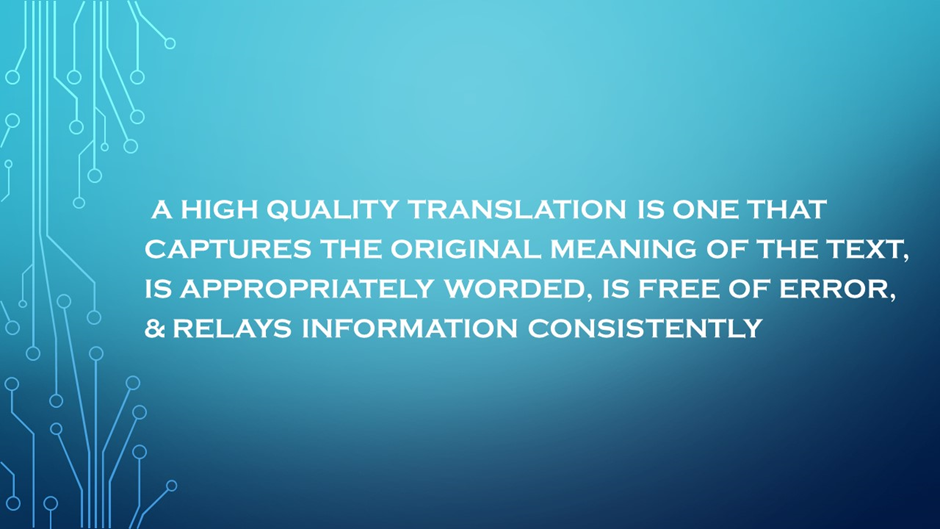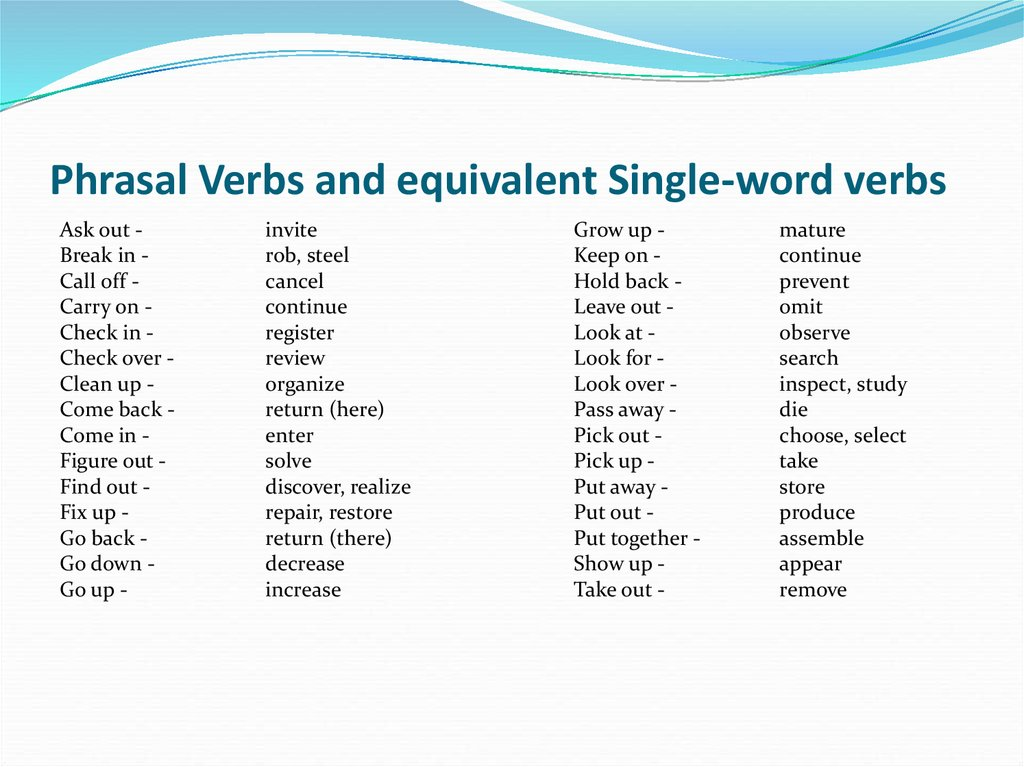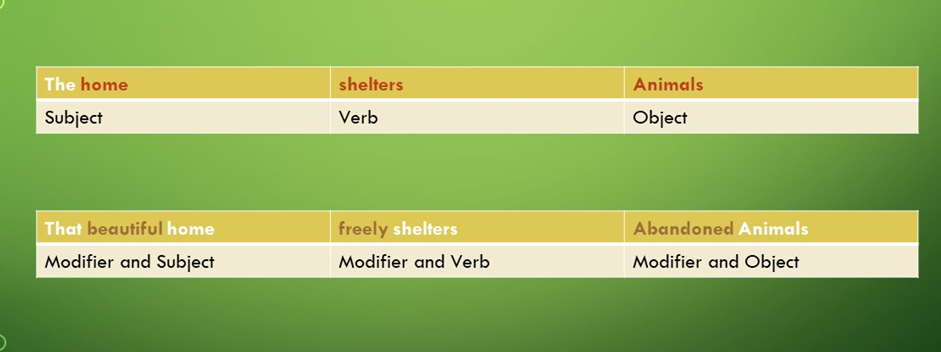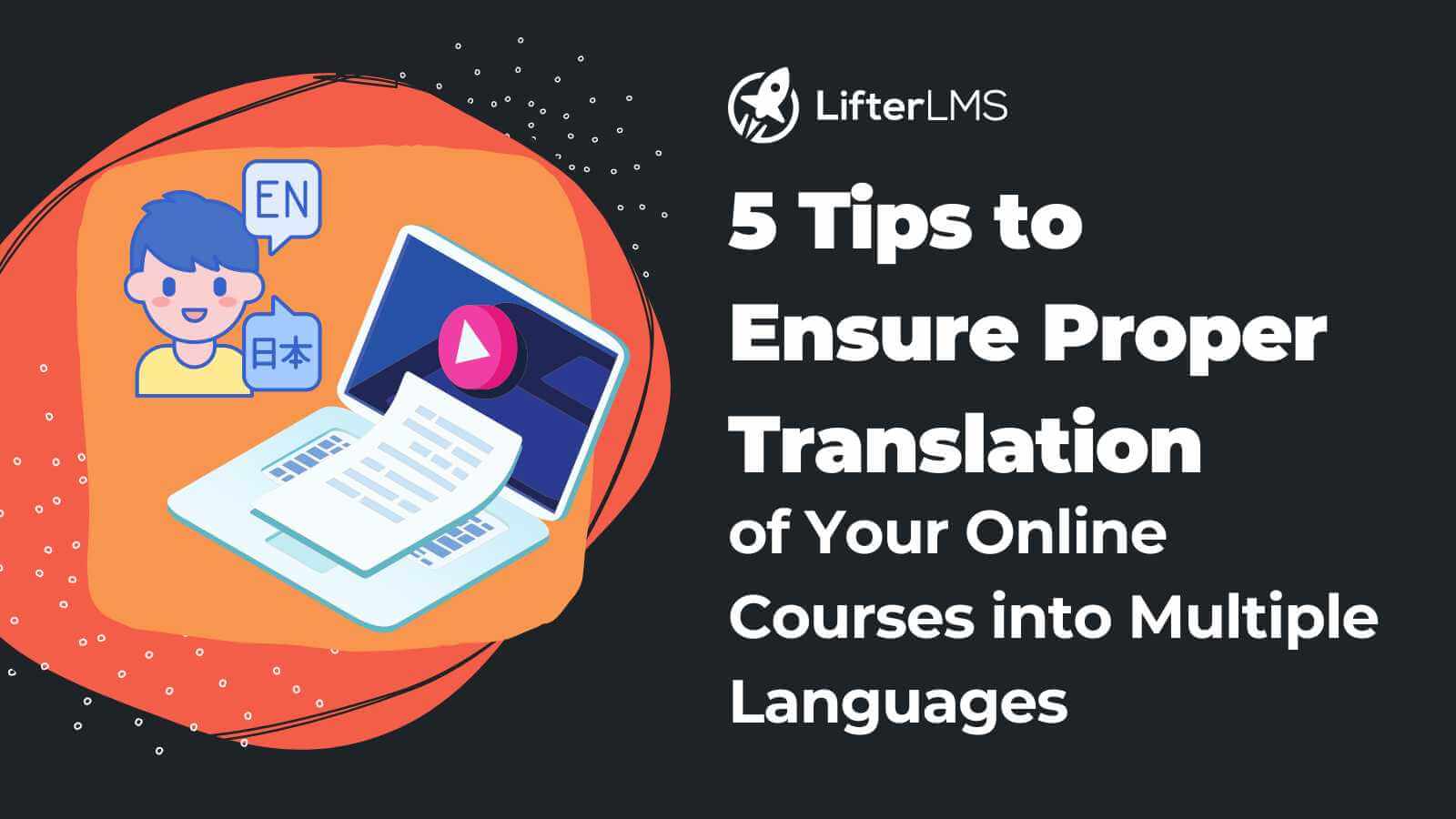Translation helps you convert your content into a language that a global or even regional target audience can understand. This ensures that your business or brand can succeed in competitive international markets by getting your content out to more people.
A significant case study of the benefits of translation is the top YouTube influencer, Mr. Beast. He translates his English source content into other languages, such as Portuguese, French, Russian, and Spanish. This has helped him grow his subscribers exponentially.
While you may not be a YouTube influencer, you can also maximize the benefits of translation if you sell online courses. So, instead of having modules tailored wholly for native English speakers, you can reach even more learners by translating your course into multiple languages.
In this guide, you’ll learn five tips for translation so you can ultimately grow your online course business.
Table of contents
1. Consider writing short sentences
Writing is an essential aspect of your course creation process. Even if you intend to create a course in video form, you’d want to write your script first. So, number one on our list of translation tips is keeping your sentences short.
Writing concise sentences is one way to maintain your original message even when it’s translated into a different language. This holds whether you plan to upload your courses on online course platforms or on your website.

A general rule is to keep narrative or descriptive sentences between 20–25 words or less. Also, avoid using too many conjunctions, such as “and” or “but” in one sentence. Instead, break the sentence into individual clauses.
Aim to express a single idea per sentence and avoid using “glue” words or filler words. For instance, rather than saying “James is such a great skateboarder because he does it so effortlessly without trying”, you could say “James is such a graceful skateboarder.”
Here’s another example of two sentences expressing the same meaning:
Sentence 1
- “By eliminating filler words and sticky text, and any unnecessary conjunctions, you can make your text more readable and thus provide a better reading experience for your user.”
Sentence 2
- “You can make your text more readable by eliminating sticky texts, filler words, and any unnecessary conjunctions.”
Both sentences express the same idea. However, the second sentence is much more concise and, therefore, easier to translate.
If your course content has complex materials or concepts that require more expertise to translate, you may opt for professional translation services that make this achievable. For consistency, you can give the translators a style guide. It’ll also be useful to provide a glossary for complex terminology or terms with specific meanings.
Another way to eliminate long sentences is to avoid using phrasal verbs in your source content. Instead of saying “take down notes,” you could say “write notes.” Or you can replace “fill out” with “complete.”
Examples of other phrasal verb equivalents are provided in the image below.

However, there may be cases where you have to use complex words in your courses that are difficult to translate into another language. In this case, it’s okay to use phrasal verbs that simplify the word.
2. Use standard English sentence structure
Standard English uses the Subject-Verb-Object (SVO) word order in most cases. The first noun is usually the subject, while the second noun is the object.
The SVO sentence structure allows you to express complex points clearly, making information processing more manageable.
However, the SVO rule isn’t always applied in spoken English. Native speakers may find it easy to make their expressions more flowery and articulate—the speakers can change the word order without losing the original meaning.
But you should maintain the SVO word order so your statements are more direct and easy to understand for translation.
Let us show the SVO in practice with the infographic below:

In the above infographic, “The home shelters animals” is the standard English structure. This can be modified into “That beautiful home freely shelters abandoned animals.” This second sentence is still an iteration of the SVO structure but uses additional noun and verb modifiers.
Keeping to the SVO will remove any difficulty your translator may face with your sentences.
3. Always use active voice
Writing in a passive voice takes focus away from the main subject noun. This makes sentences more complex, longer, and harder to translate. For example, “the dog was chased by John” transfers focus away from John onto the dog he’s chased (although John was the actor here).
Using an active voice improves the clarity of your sentences so it’s easier to translate your content to the target language.
Let’s elaborate on this with an example;
- Passive voice – When using this device, always make sure to extend the antenna in an upright position.
- Active voice – Always extend the antenna in an upright position when using this device.
Of these two sentences, the second is easier to understand and translate. The second sentence is also shorter, which is what you want.
Using active voice will make it easier for translation tools you use to reproduce clear and precise content.
Back to writing and speaking with an active voice, here are a few tips to follow:
- Always ensure that the subject is the first noun in the sentence order and that they perform the action. Hence, “John chased the dog” instead of “the dog was chased by John.”
- Avoid using “by” as an adverb, unless necessary. For example, “the car was washed by my father” can be simplified as “my father washed the car.”
- Avoid linking words such as “are”, “is” and “be”. For example, “the dishes are washed by Kate” can be rewritten as “Kate washes the dishes”.
Putting this into practice will help you speak and write English more effectively. You’ll make it easy for translators to translate your content, too.
4. Spell out your months in dates
Here’s another one of our translation tips: spell out the month when discussing dates. This is because dates are written in different formats depending on the region, and it may be hard to decode if you write them in number format.
As an example, let’s assume that a US website user visited a .au domain and saw a date written “10-09-2022.” To this website user from the US, this date translates to October 9, 2022. To audiences in most other parts of the world, such as Australia or the UK, the same will be understood as September 10, 2022.
However, if you have to write out the numerical date values instead of spelling out the text, the ISO 8601 format of YY-MM-DD is recommended. Thus, everyone regardless of the region would understand 2022-09-10 as 2022-Sept-09.
5. Don’t use humor in your writing
Typically, it is hard to decipher humor based on words alone. That’s why one of the most important translation tips in this guide is to avoid all humor, slang, jargon, or wordplay in your source English content.
Humor often draws from cultural or social media references that might be hard to understand by people in a different culture. So, misinterpretations of the original meaning might arise when translating a statement. Or worse, the translation might stray away from the original intent.
As a result, localization strategies are essential in cases where the original tone and intention of the content must be maintained. However, if you need to convey humor in your course content (let’s say for a play or a narrative essay), you should use transcreation services.
Transcreation (also called creative translation) aims to culturally adapt content while maintaining its original intent and meaning rather than using a word-for-word translation which may be misconstrued.
Transcreation gives your translator more flexibility in translating the source content to achieve localized results. Thus, they can convey your intended humor or slang without losing its meaning.
In closing
Translating your content into foreign languages will grow your online course and expand your reach into new markets. However, writing for translation requires a clear understanding of the content to make it concise and ready for translation.
In this guide, we gave you five translation tips. They include keeping sentences short, maintaining the SVO structure, and using an active voice. Furthermore, you should remove any ambiguity from dates by spelling out the month. Finally, avoid humor and slang in your content or use transcreation services.
Now have your online course translated and start growing your business. Good luck!






